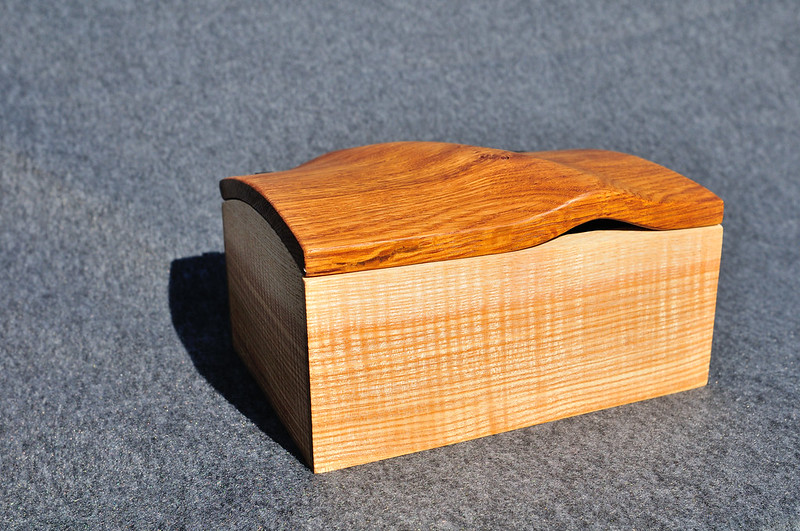I recieved this axe in the post at work today, it was bought on ebay because,
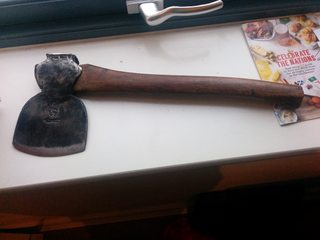
(click image for original resolution)
It did raise some alarm in the office initially, but my colleagues conceded that it was in fact a very nicely made axe, and indeed one of them called it a thing of beauty; thankfully they're used to odd things arriving in the post for me (engineers scrapers, sawfiles, chemicals for formulating rust remover, Saws, Steel Stock, Parts for machine tools, etc...).
When I got home, I took it back out of its cardboard wrappings to have a proper look:
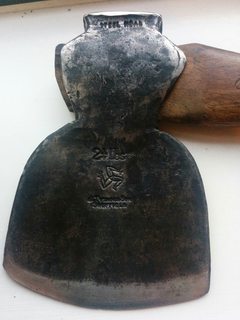
(click image for original resolution)
But what's that up at the top? Running though the "Steel Head" mark?
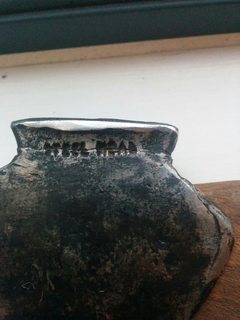
(click image for original resolution)
Is it a Crack?
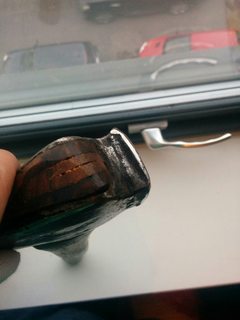
(click image for original resolution)
It seems to extend round all four faces at a uniform depth...
I'm honestly not sure if a bit that cracked off the poll and has been soldered/welded/brazed back on, or if it's an artifact of the process of producing the axe... If the head was cast it could be a parting line from the mould, but I seem to remember, that axes are normally forged, and the more pointed side of the eye (i.e. near the bit) seems to point at it having been forged rather than cast; my other thought is that it could have been forge-welded on as part of the production process to make the production of a poll that tapered out at the end easier.
Opinions?
- I wanted a medium sized axe which was small enough to use for large joinery tasks, but big enough to use for limbing trees and squaring up logs.
- It's manufactured by J. Tyzack, and I have become rather fond of most of my Tyzack tools (even if most of them were made by Tyzack Sons and Turner, rather than the other two Tyzack family firms)

(click image for original resolution)
It did raise some alarm in the office initially, but my colleagues conceded that it was in fact a very nicely made axe, and indeed one of them called it a thing of beauty; thankfully they're used to odd things arriving in the post for me (engineers scrapers, sawfiles, chemicals for formulating rust remover, Saws, Steel Stock, Parts for machine tools, etc...).
When I got home, I took it back out of its cardboard wrappings to have a proper look:

(click image for original resolution)
But what's that up at the top? Running though the "Steel Head" mark?

(click image for original resolution)
Is it a Crack?

(click image for original resolution)
It seems to extend round all four faces at a uniform depth...
I'm honestly not sure if a bit that cracked off the poll and has been soldered/welded/brazed back on, or if it's an artifact of the process of producing the axe... If the head was cast it could be a parting line from the mould, but I seem to remember, that axes are normally forged, and the more pointed side of the eye (i.e. near the bit) seems to point at it having been forged rather than cast; my other thought is that it could have been forge-welded on as part of the production process to make the production of a poll that tapered out at the end easier.
Opinions?



































